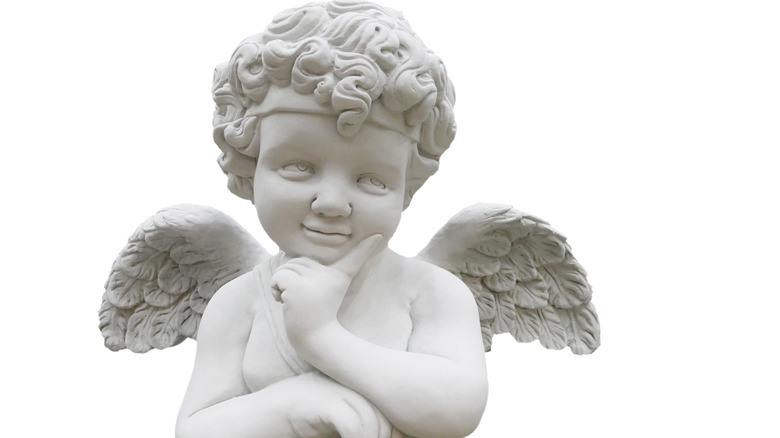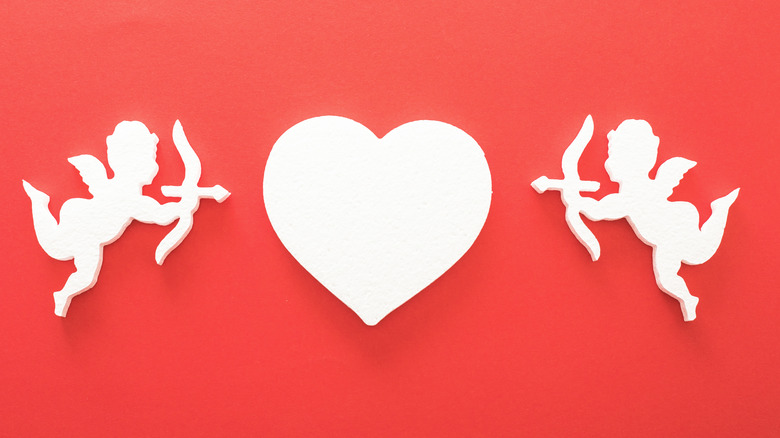The Truth About Cupid
Though the commercialization of Valentine's Day is often lamented, the holiday still celebrates love in all its forms — and as you search for that perfect gift, you're liable to spot an adorable bow-wielding cherub Cupid on a box of candy or nestled in a store's flower displays. This little love-spreader, though. used to be far more significant than mere decoration.
Cupid's story began with the Ancient Greeks, according to History, who held the iconic figure high regard. To them, Cupid was no cute little cherub, but the god of love himself, Eros. As tends to be the case with the Greek pantheon, Eros' origins are tough to trace (Aphrodite and Ares are just one of several potential pairs of parents he may have had), but he did wield a bow just as Cupid does. It seems that it had the same potential for deadly mischief, too.
History goes on to say that Eros had two types of arrows: golden ones and ones made of lead. The golden arrows could make their target fall in love (so far, so Cupid), while the lead arrows would bring out strong negative emotions. The gods of Ancient Greece had a fondness for messing with their human subjects (as Britannica reports, Sisyphus was charged with fruitlessly rolling a huge boulder up a cliff forever, starting at the bottom wherever it rolled back down), and Eros was very well equipped to do just that. How, though, did Eros become Cupid?
Cupid was Eros to the Ancient Greeks
Per Britannica, Cupid is the Roman interpretation of the god. In Roman mythology, he was born to Venus and Mercury (the latter being Hermes' counterpart, the messenger god). With his mother being the Goddess of Love, it seems that Cupid's role was clear: he was born to spread the message of love. Cupid was sometimes depicted by the Romans as an armor-clad warrior, but it would be the much more common cherubic image of him that persisted until the present day.
In Victorian Britain, the Victoria and Albert Museum explains, Valentine's Day cards became incredibly popular, thanks to mass production and a cheaper and wider-reaching postal service. These cards ranged from saccharine, lacy confections to so-called "vinegar Valentines" — shocking or insulting cards that proved the Victorians actually could have a wicked sense of humor when they wanted to. Many of the classic, romantic cards featured nymphs, fairies, and cherubs like Cupid himself, though. Many still do.

